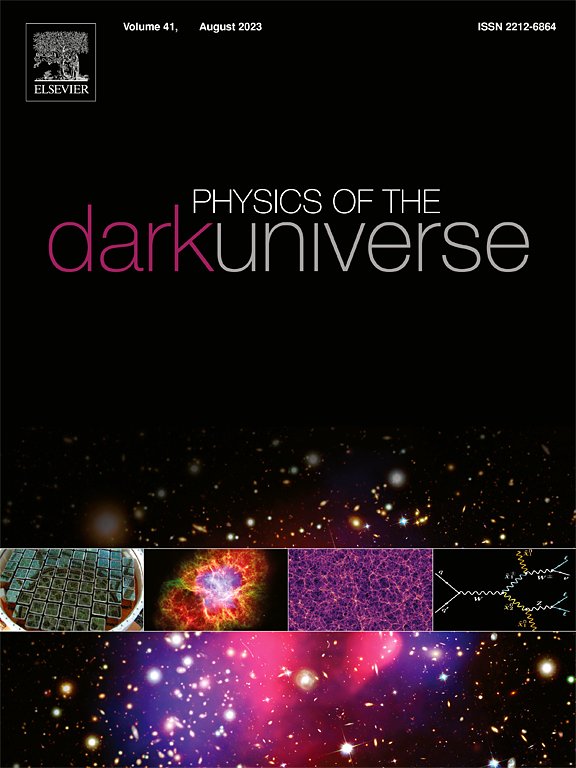A stacked analysis of GeV gamma-ray emission from SPT-SZ galaxy clusters with 16 years of Fermi-LAT data
IF 5
2区 物理与天体物理
Q1 ASTRONOMY & ASTROPHYSICS
引用次数: 0
Abstract
We report a statistically significant detection of cumulative -ray emission from a stacked sample of SPT-SZ selected galaxy clusters using 16.4 years of data from the Fermi Gamma-Ray Space Telescope’s Large Area Telescope (LAT). By analyzing a population of clusters with individual Test Statistic (TS) values 9.0, we identify a robust cumulative signal with a TS of 75.2, which corresponds to approximately significance. In contrast, clusters with TS 4.0 yield a weaker cumulative signal of TS equal to 9.65 (2.65), consistent with background fluctuations. The derived -ray spectrum is well characterized by a power law model with a best-fit spectral index of and an integrated flux of ph cm−2 s−1. The high TS values in the full sample are likely driven by AGN-dominated clusters. However, when clusters with TS between 4 and 9 are excluded, the remaining low-TS population shows a stacked signal consistent with hadronic emission.
利用16年的Fermi-LAT数据对SPT-SZ星系团GeV伽玛射线发射的叠加分析
我们报告了Fermi伽玛射线空间望远镜大面积望远镜(LAT) 16.4年的数据,从SPT-SZ选择的星系团的堆叠样本中检测到具有统计学意义的累积γ射线发射。通过分析具有个别检验统计量(TS)值的聚类总体;9.0时,我们确定了一个稳健的累积信号,其TS为75.2,对应于大约8.4σ显著性。相比之下,具有TS <;4.0产生的TS累积信号较弱,等于9.65 (2.65σ),与背景波动一致。所得γ射线能谱符合幂律模型,最佳拟合谱指数为- 2.59±0.20,积分通量为1.67−1.07+1.35×10−11 ph cm−2 s−1。整个样本中的高TS值可能是由agn主导的集群驱动的。然而,当排除TS在4 ~ 9之间的簇时,剩余的低TS种群显示出与强子发射一致的堆叠信号。
本文章由计算机程序翻译,如有差异,请以英文原文为准。
求助全文
约1分钟内获得全文
求助全文
来源期刊

Physics of the Dark Universe
ASTRONOMY & ASTROPHYSICS-
CiteScore
9.60
自引率
7.30%
发文量
118
审稿时长
61 days
期刊介绍:
Physics of the Dark Universe is an innovative online-only journal that offers rapid publication of peer-reviewed, original research articles considered of high scientific impact.
The journal is focused on the understanding of Dark Matter, Dark Energy, Early Universe, gravitational waves and neutrinos, covering all theoretical, experimental and phenomenological aspects.
 求助内容:
求助内容: 应助结果提醒方式:
应助结果提醒方式:


